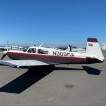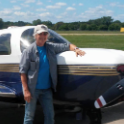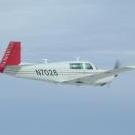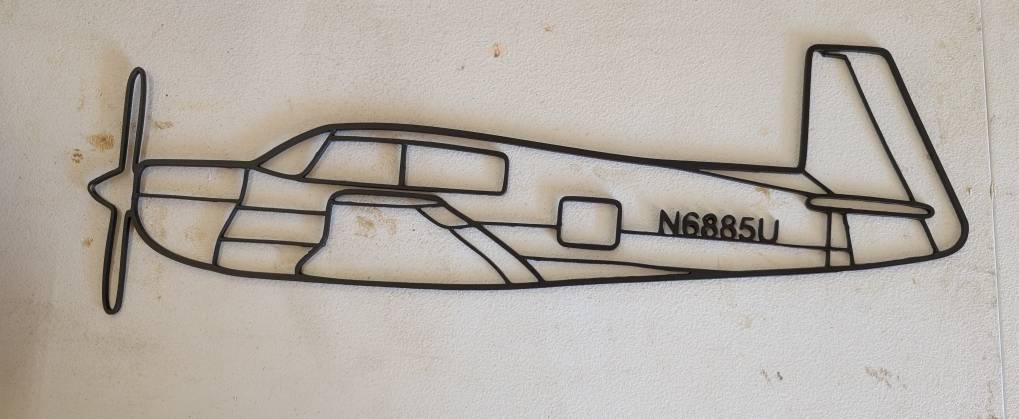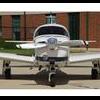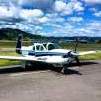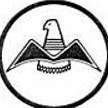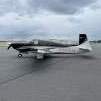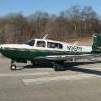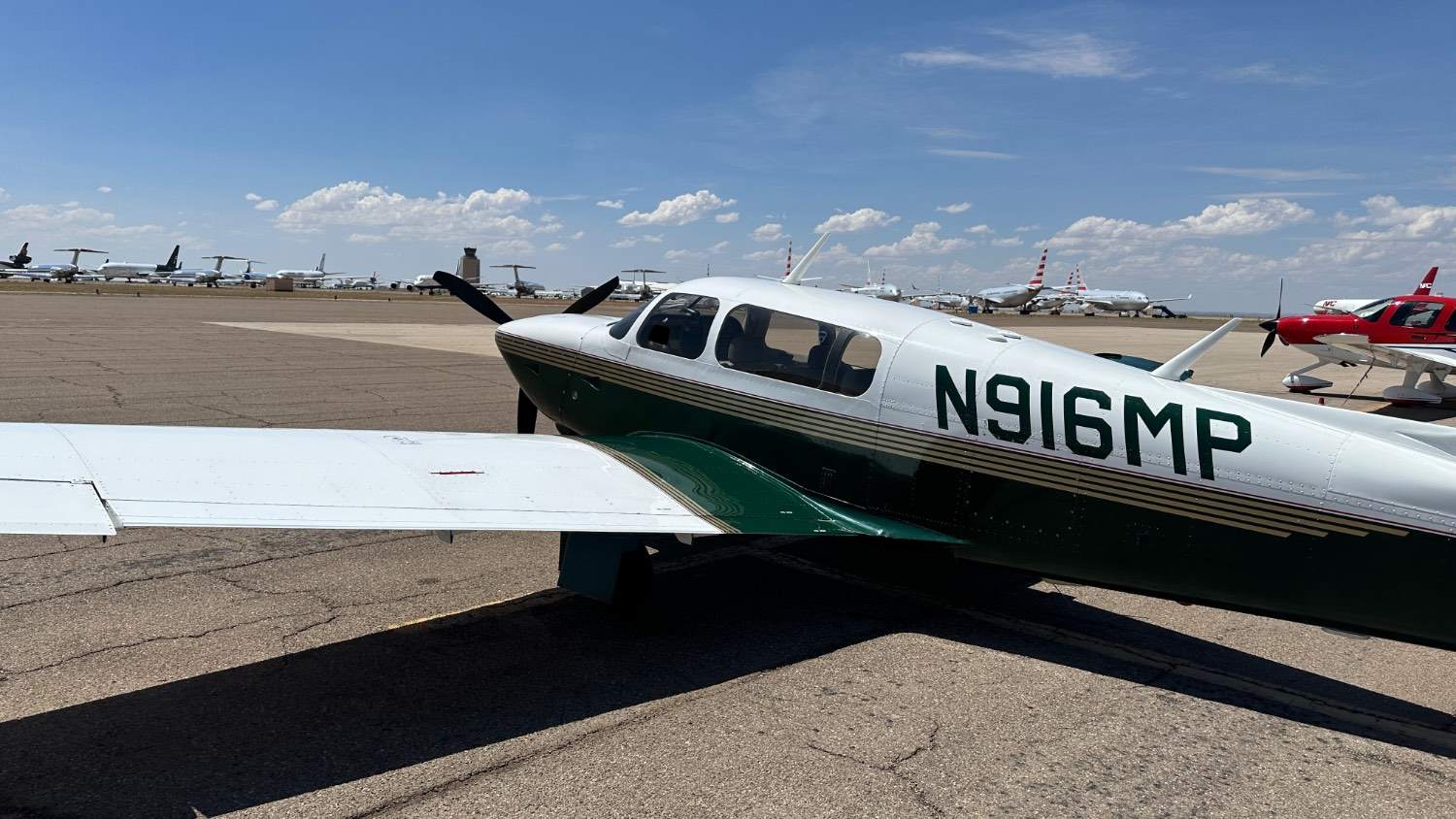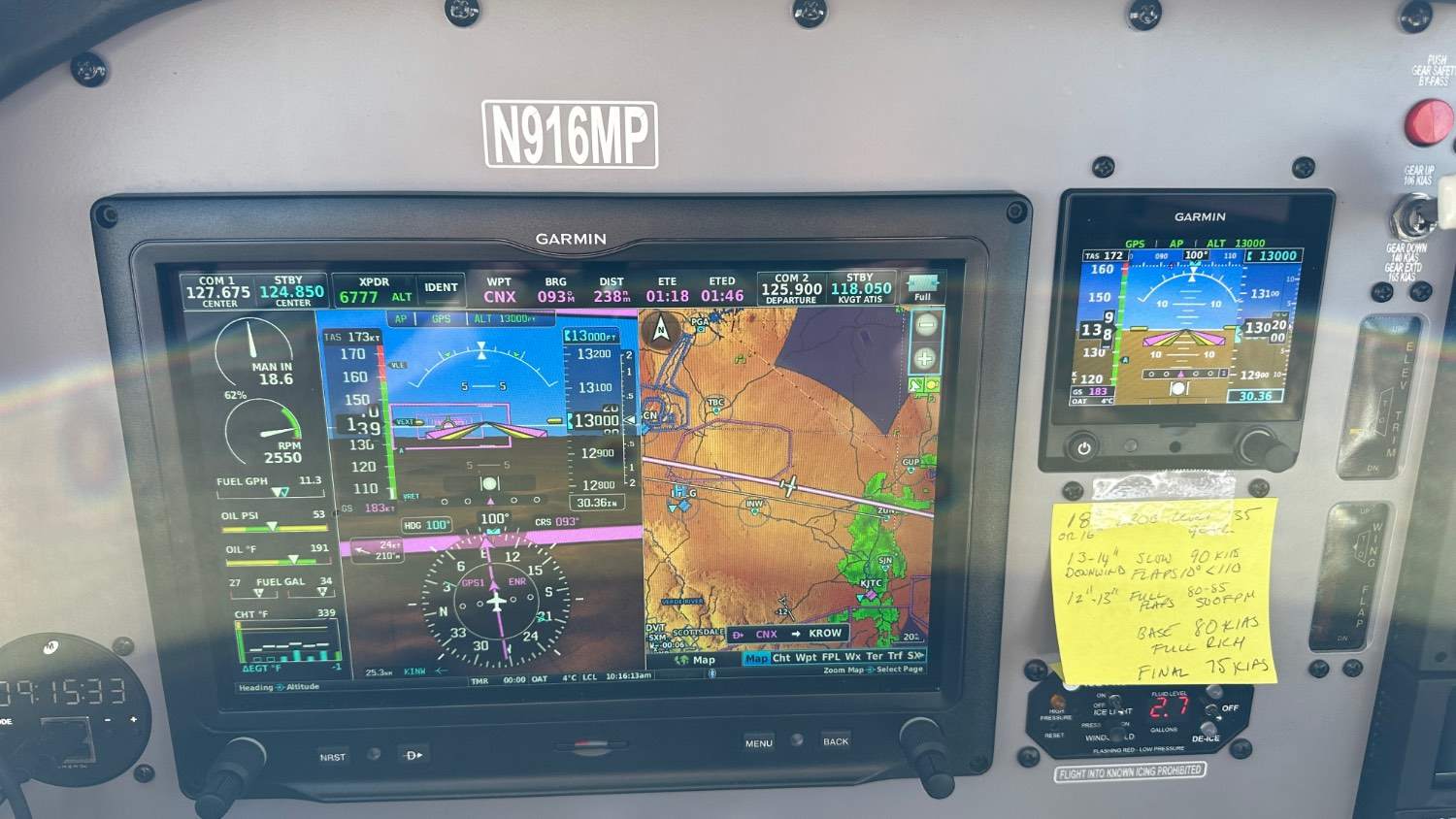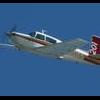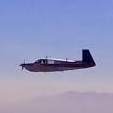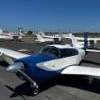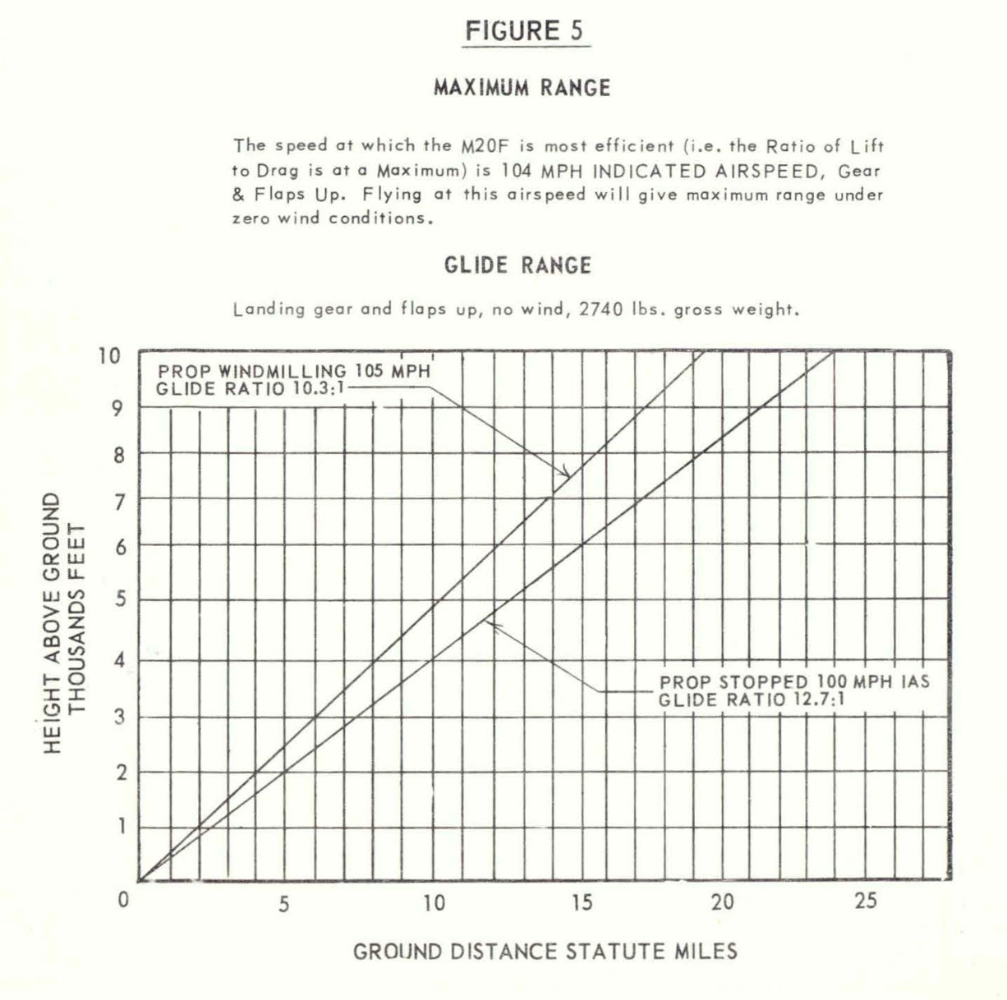Leaderboard
Popular Content
Showing content with the highest reputation on 08/25/2024 in all areas
-
Flying home from Nantucket yesterday through NY airspace. ATC had me turn 70degrees right of course then back direct to my fix before joining my airway. This occurred prior to descending to 6000 and getting behind another aircraft which I was sequenced in about 7.5 miles behind. Ok no problem. Then this happens… ATC: Cirrus what’s your airspeed? Mooney what’s your airspeed? Hey Mooney could you do me a favor and slow down a little? I complied but wanted to say Mooney reducing speed for bragging rights… Oh it’s the little victories in life.5 points
-
Sure, different opinions make the world go round. But what you should be asking yourself is why, collectively, pilots are dying and getting into legal trouble at roughly the same rate as in the past. That's what the accident data says. I get that everyone feels better with new tech, but that's not really the goal, is it?4 points
-
I know Mooney Max is just around the corner and they're both very close this year but, who is going to the Summit next month? I'll be there for the first time and I've donated a tow bar for the silent auction. I've been playing around with my new plasma table and will probably bring one of these wire frame Mooney models as well. I'm looking forward to it and hoping to meet some of you there. Sent from my Pixel 9 Pro XL using Tapatalk3 points
-
Someone taxiing behind me once referred to the plane as a Bonanza a few times, then apologized when he realized it was a Mooney. In a classic case of l'esprit d'escalier (wit of the staircase) I realized 10 seconds later I should have popped the speed brakes and said, "now I'm a Bonanza".3 points
-
This is absolutely true but I think unrealistic for most. There’s so much tendency to not RTFM at all, I’m thrilled if they read it once and are able to effectively use it as a reference. I think the smartest thing Avidyne did in the modern era was to use a combination of a scenario-based training manual, a series of videos which go through them, and an app you can use to follow along. But as you point out, correlation is yet another step higher. And it doesn’t deal with integration - how your FMS/Navigator plays with the other stuff in your panel.3 points
-
The more I think about this, it's like most things in life. You'll never know 100% about everything and sometimes the best game plan isn't knowing how to work everything perfectly, but rather having a plan B when things change or don't go as expected. Even with a steam gauge panel, we've moved past the era without a GPS. To successfully train the future we need to embrace that and realize it comes with pros and cons. So it's up to the pilot and their instructors to maximize the pros and minimize the cons. But I feel rather strongly that trying to train pilots that they have to be 100% and know everything increases the chance that they don't acknowledge an error, get task saturated on things that may not be a priority, or don't feel free to confess when they need help. Proficiency is only achieved with continued, deliberate work and regular practice. Learn what to do with VFR flight into IMC. Ask for a vector while you set up your equipment. Ask for a delay vector if you need more time on an approach. Ask for a heading to VFR weather. Admit that you don't have proper fuel reserves and make a pit stop. Pay attention to weather changes and decide to make a stop. Know that "unable" is a valid response when the circumstance warrants it. I don't think that any of us will ever know all our equipment completely...even the best instructors or professional pilots. But maybe the best instruction is how to adapt and how to quickly recognize the emergency in front of you. This is after all why we have checklists and POH/AFMS with emergency procedures. This is also why as my buddy reminded me, "it's important to learn from others mistakes, because you can't live long enough to make them all yourself." (Eleanor Roosevelt)3 points
-
My daughter brought me a pregnant stray cat not long ago, she had kittens about 10 weeks ago. This one has been riding around the ranch in the RTV with me without complaint and is pretty good in a car so, I'm going to get him used to a harness, leash training him and see if he'll fly. Today was his first trip to the airplane, he's still not thrilled about the harness, it's only his 3rd time wearing it. I think he's going to get there though. Sent from my Pixel 9 Pro XL using Tapatalk2 points
-
God I hate old people, they ruin it for everyone.2 points
-
A Problem with hiring a local mechanic is he’s likely inside the sphere of influence of the seller and if he blows up the deal, he pisses off the seller and it’s his local reputation so I don’t think you can get a totally unbiased honest evaluation that way.2 points
-
My $0.02 opinion is that there are TWO issues here, uncorrelated with each other despite popular opinion. 1) Technology 'issues' related to 'new'/'next' generation avionics 2) The reasons accident rates/reasons haven't changed all that much For the first there is no doubt that a working GPS makes situational awareness stone-simple. But there is no way you are going to convince me it's easier to use than VOR/CDI. Sure, that took a bit of education and training but it was universal across aircraft platforms; once you grokked it you had mastery. Now, there are countless variations in operation of various brands and their interaction with a multitude of installation integrations. You have nested sub-menus, cursor activation, schemes for scrolling, ad infinitum, ad nauseam...absolutely it is harder to learn, let alone master. As evidence look at the number of CFIs that 'specialize' in training on various boxes. I dare anyone to prove they know all the selections in all the sub-menus on all the pages of even the lowly GNS430 by heart such they can instantly find any one of them without fumbling! Let alone all the configuration settings. It is no mystery to me for issue two: accidents/incidents haven't improved because the root causes are basic airmanship not technology driven. Bad weather decisions, poor fuel planning and denial (ignoring hand calcs, or your fancy GPS integrated fuel totalizer), RLOC, gear-ups, VMC into IMC, lapses in and bad judgement. Technology may make information more easily accessible but it doesn't shift the needle when it is routinely ignored. Bottom line, IMHO, technology my appear to provide more safety but in practical reality it does not. If it did, we would see a demonstrable improvement in accidents.2 points
-
They Navy started with the SNJ, then the SNJ-2, then the -3 up to the -7. There was an SNJ-8 that was ordered, but the order was cancelled. T-6G was rebuilt early models. T-6Fs that were updated were called T-6H. LOTS of models. The Harvards went from Harvard I to Harvard 42 points
-
Look at your 3rd adi?! in my airplane, if both G5s go TU, I gotta make sure my autopilot is engaged or engage it. That’s the nice thing about an STEC rate based.2 points
-
Perhaps for the preferred diet of the rake-tailed greatwing North American bugsmasher?2 points
-
I touch them twice during every flight. Right before I level in cruise and right before I drop the gear. One less thing to worry about after landing or in the event of a go-around.2 points
-
I learned on a ADF, manual changing chains on a Loran, etc. I can hit a few keys on my 650 and it will load SID, enroute, and STAR. Click on the autopilot and it is movie time on the iPad. Modern technology is super easy when it works. When it doesn’t that is where you need more skill and education to be proficient.2 points
-
Levels of Learning per the Instructor's Handbook from lowest to highest: Rote, Understanding, Application, Correlation. Rote: Read the operator's manual several times. Understanding: Watch Youtube videos of the products you are interested in learning about. Application: Watch Youtube videos of the products you are interested in learning about with examples, read postings on forums such as this or Beechtalk, practice with Apps if there is one, and practice in your airplane. Correlation: Practice in your airplane in the real world with ATC throwing the inevitable curve balls at you. It happened to me today on a student's Instrument Cross Country. Except for the multimillion dollar simulators like operators such as Flight Safety have, I never thought much of inexpensive sims. If you're going to spend in excess of $100,000 for a modern panel upgrade, you need to spend the time and read the manuals from cover to cover--several times. While it may seem boring to some, most of the information needed to competently use the equipment is in the manual. And each of the manufacturers has their own design philosophy. Once you understand the philosophy, I've found that you can usually pretty quickly find a solution to a problem by going to the right menu. Finding the menu quickly is philosophy dependent. I do find it is challenging to learn many philosophies. I feel like I'm an expert in the Garmin world. Not so much in the Avidyne world, although I find I can get around pretty well even there, since the most used actions are fairly obvious. The more complicated actions in any of the worlds such as VNAV as an example, or loading Airways, which is device dependent, require a YouTube video, or an instructor who has "been there, done that". I have found that there is no substitute for practicing with your own avionics. If something doesn't go as planned, it's back to the manual for guidance, then back to the plane to try it out. Unfortunately, company support is usually worthless from my experience. These people seem to be trained to a level that is barely Rote. So set aside some time sit down in a cosy chair, and start your "Adventures Through the Manuals". You'll be surprised how much you can learn.2 points
-
Hi All, sorry for the late reply. Been away from MooneySpace for too long. Kevin Westbrook is still going strong and earlier this year rebuilt, tested, and 8130’d a number of Brittain PC parts through Porter-Straight for me. These included a pilot control value, a servo control valve, a brittain basic PC gyro, a B-11 accutrack, and a B-12 accuflight. Cecilia at Brittain sent across the STCs for my bird at no cost! Can’t beat that. Also have a spare TC I considered sending over for rebuild, quoted $850 at the time, but my setup doesn’t need one. Highly recommend contacting Kevin and sending your brittain parts over for rebuild while you can! Sent from my iPad using Tapatalk2 points
-
The one I have collared is the autopilot breaker. That would be the one that I'd need to pull "in a hurry" if I had runaway trim issue. Otherwise it seems that most scenarios would be more deliberate and slow.2 points
-
It is the identical diameter of the breaker so the only change is that you can feel the scratchy hook or soft loop depending on which you choose. No need to look down and even at night you can find it by feel.1 point
-
It’s especially fun when behind a Cirrus..1 point
-
I think this is because the safety improvement with the technology we are discussing are dependent on the pilot. Vs seatbelt and airbags in car that don’t have anything to do with how poor the driver is. So you won’t see improvements until you actually improve the pilot…which is the leading cause accidents in the first place. But the big question discussed above is if that technology encourages LESS training and airmanship, which would result in MORE accidents. Smart glide and auto land are steps towards an “airbag” type safety feature. (EDIT: I'd put Electronic Stability and Protection (ESP) and the blue LVL button in similar category) But I think most of the technology features today increase CAPABILITY more than safety. Two entirely different feature sets, but easy to confuse the two.1 point
-
Made it from KVGT to KCXO by way of a bathroom stop at KROW. Total time in air about 6 1/2 hours. Fantastic planes. Average fuel burn 11.7 GPH across both legs. Average 171 KTAS. Flew between 9 and 14k depending on ATC routing. Here are some pics. Final one is in my Brother IN Law’s hangar at CXO in front of his 1943 Stearman (previously owned by Steve McQueen). Thanks everyone for the preflight PIREPS. Headed back to Vegas midweek. Thinking about a bladder stop in EL Paso instead of Roswell and coming up via the Phoenix route. Any PIREPS on El Paso?1 point
-
Mine are in the same locations. My oil temps are outstanding and I’ve never had any problems - even with temps above 110° here in Texas -Don1 point
-
Again. You have to carry 2 liters of water where you can reach it. They say add the water BEFORE putting the device in the bag. All this time, the device is blowing flames, smoke, and gases at you. And getting HOT. Remember, 2L of water is 4 normal water bottles.1 point
-
Sorry for the confusion, Ross. I didn't mean to imply the pic I showed was a mod, only that there is a variant for the FI-engined birds and was posting it to show others who may not be familiar Thanks, David. I'll PM you. Not to put any pressure on you, but do you think this could be applied to a conventionally-cowled C-model? Thanks for the link, 47U. Looks like I have a lot of reading to catch up on.1 point
-
Pilots will needlessly complicate even the simplest of devices with overthought procedures.1 point
-
Obviously both arrivals have risks and it’s just a trade. I fly the Air Venture Cup race with its own risks. I love formation flying, it’s fun, we always intended on flying the Caravan but logistics prevented it. But the response to the midair turned me off of wanting to try - I know people inside the mass arrivals are satisfied with the safety culture but based on what they’ve chosen to share publicly it isn’t for me. Plus given the choice of pre-Oshkosh events, I would rather do the air race anyway My conclusion about comparative safety is based on data - though I have 15 safe years over Fisk, I’ve never done the actual mass arrival training so cannot compare based on personal experience. All I know is the rate of midairs in mass arrivals (1 in 2019, maybe something else happened with Cessnas but not a midair?) is higher than the rate at Fisk (last one was 2009?) especially considering the volume of traffic over Fisk exceeds mass arrivals by an order of magnitude. I think the last MS get together with the Caravan I attended was 2019 - we ordered pizza and had a great time. Many of us were also invited to join the Caravan bbq too. It also used to be if you timed your regular arrival near to the caravan scheduled time you’d be parked in the N40 within a few rows of the caravan. But lately the N40 has been reserving so much special parking for all the mass arrivals, single arrivals that arrive around the same time get sent really far away - if you want parking as close as the mass arrivals get you really have to get in on Thursday or show up midweek and get a spot when they are filling holes. Good parking is a definite good reason to do the mass arrivals these days. I would love to see the get together come back.1 point
-
1 point
-
I also fly a 1976 Mooney M20F, which we bought 20 years ago in a partnership, and have put nearly 2000 hours on the engine with no trouble. It's not a flight school trainer, but it's been used by several of the partners to train for and obtain commercial certificates, across all seasons of the year, and we continue to fly the commercial maneuvers for proficiency on a regular basis. Bottom line: you're way overthinking this, don't worry so much about it. Specifically do not worry about rates of heating or cooling. It's just not a thing for this engine, in the flight regime where normally aspirated piston singles fly. If you're repeatedly flying a large number of high-power/low airspeed maneuvers in the heat of summer (power on stalls, chandelles), check the CHT every few minutes. If they get over 380, sure, you can level off at cruise speed and open the cowl flaps a few minutes. But that's it. Otherwise, you're not going to hurt your engine with any of the commercial maneuvers. You're generating more wear with a single startup/taxi/takeoff/climbout sequence than you do in hours of commercial maneuver training.1 point
-
1 point
-
I have a fairly standard six-pack except that the AI and DG are G5s. This give a very good distribution of redundancy opportunities. Even if both of the G5s go TU (which is highly unlikely), I still have the traditional air instruments, turn coordinator, and compass. Many folks that learned with round gauges have done partial panel with that situation to simulate a vacuum pump failure. It's not fun, but it's definitely doable. During an alternator failure several years ago I turned off the electrical system entirely to get home so I'd have enough battery to get under the bravo airspace and to the home drome. It occured to me during that flight that I really, really liked having the air instruments separate from the electrical system. As much as I like glass panels, which I do fly fairly regularly in other airplanes, I'm reluctant to "upgrade" to full glass in my airplane. That one flight was not uncomfortable at all without the electrical system (since it was very nice VFR), but it would have been fairly stressful to me if I were depending solely on a backup battery to get home. It would have probably meant not being able to get home that day. It was kind of an interesting realization that I probably wouldn't have come to without that experience. That's just me, though, I kinda wish that hadn't happened.1 point
-
Shock cooling is a myth, so don't worry about it. Think what happens when flying into a rain shower as a thought experiment. Sent from my motorola edge plus 2023 using Tapatalk1 point
-
We'll be there, too. I'm looking forward to meeting you and seeing your towbars. The wire frame looks pretty good!1 point
-
Sure, but now you have to carry a bag and a big water bottle. I hate to be a litter bug, but if my device catches fire it’s going out the storm window or the door. I hope it doesn’t start a wildfire.1 point
-
That's my technique in most airplanes with cowl flaps. Generally on final. My theory is simple (an perhaps wrong). The reason we close them is to reduce the effects of too-rapid cooling. By the time we are on final, we have had a number of power reductions. To the extent rapid cooling is an issue at all, it's over. Just as over as opening them 30 seconds after landing. The only remaining issue is to have cowl flaps open for the go-around. People have enough issues with go-arounds; why not remove part of the workload?1 point
-
There’s a lyric “I’m the problem, it’s me.” Indeed, some of us here - including me - were critical of the Caravan’s lack of transparency and incomplete public explanations (“you’ll have to come to a clinic and find out”) after their 2019 midair. Not going to rehash my thoughts, you can find the old threads, including the wrap up one after their presentation at Oshkosh a couple years after the incident. It seems to me direction went out or there was universal consensus in the Caravan to no longer discuss the Caravan here (I had a very weird interaction with a Caravan leader who insisted I come back here and report everything I heard at their presentation here on MS - as if he couldn’t do so himself?) It is a shame, there used to be MS/caravan gatherings at osh for those of us unable to participate in the caravan for whatever reasons. If they are still happening, I don’t know, but I haven’t been invited to one. I am happy the caravan continues to thrive, formation flying is fun and camaraderie is great for the community. But the data doesn’t support the mass arrivals claims that they are a safer method of Oshkosh arrival than Fisk.1 point
-
Manufacturing cost of these, in a 4-cavity mold, is probably $0.02 - 0.03 each. Probably not enough demand to make more cavities.1 point
-
For what it is, yes. That's some significant mark up. It's not like there's PMA or traceability or other overhead involved, it's literally one of the most inexpensive things to make on the planet, so I don't get why so much mark up is necessary other than they can, because it's an airplane part and airplane owners will say, "$2.84 is expensive? Really?" They'd probably even italicize the "really".1 point
-
$2.85 is expensive? Really? I spend that for a latte. Anyway, if you look you'll find that Spruce sells them cheaper than most other suppliers. But if you are really a CB just "borrow" your wife's fingernail polish. I only banded the autopilot and speed brakes. I pull the speed brakes any time I turn on the pitot heat after brushing the yoke switch once while picking up some ice and the left one wouldn't go back down all the way.1 point
-
On my J model if they're fully open they take about 4 knots off my cruise speed. At slower speeds it probably won't make as much difference. On other models they aren't as large and don't open as far, so it'll be different for different models.1 point
-
These have been all interesting reads. I think there is a lack of official guidance or standardised procedure here and the Mooney is not your PA-28 or C150/172 and requires a bit of thought. I don't think it's good enough to say just establish the glide and pick a spot and land. Furthermore, yes it is a judgement exercise but it is judgement within an envelope of known points eg 1000' abeam, high key/low key etc. This is why we practice circuits as mundane as they are perfecting circuits is key to a good approach and you can enter at any point of the circuit and know immediately what speed and what configuration you need to be to make it all work. The POH provides 2 speeds (actually 3) for glide - prop windmilling 105mph/92KIAS 10.3:1 glide and 100mph/87KIAS 12.7:1 glide. Then there's that paragraph see attached. A few discussion points Energy management on finals - is 100/87 held to the flare and how are you flaring eg one single flare and float or a two stage flare? Pulling the prop to full coarse - I have thought about this and have wondered if this is not a set up for an incident ie forgetting to put the prop back to full fine for a go around ...and before someone says but that's should be handled in your finals check well task (target) fixation can be a debilitating thing and given we don't know who our audience is with respect to experience the procedure needs to be qualified. I'm not saying this is an incorrect technique but there needs to be a caution attached. PFLs are great on a 5000' strip, plenty of fat to play with. You guys must feel blessed and spoilt for choice of en route airstrips but not every forced landing is gong to be to a 5000' strip. I guess I feel a bit underwhelmed mainly because I was expecting that as old as the Mooney is there would have been a well developed and tried and true method and patter. Just for the record when I got my aircraft, without guidance and relying on my experience I attempted a PFL starting at 2500' at high key on the dead side abeam the keys the aircraft lost 1000' in the 180 to the opposite side I then put the (manual) gear down and flew the remaining circuit to a point where I had an overshoot and could have put the flaps down and felt confident I would have made it and then went around. Next time I will try 1000' abeam with the gear up and complete the circuit to see the difference. I can't remember if the gear was hard to put down at the slower speed but the whole Johnson Bar thing was a bit of a struggle until I got use to it. I'll try it again at slow speed at height. Looking forward to further discussion. Cheers1 point
-
When I bought my M20E from GMAX two years ago, like you I did the log reviews myself with help from experienced professionals. I then hired a local AP to go onsite and do the pre buy. We prioritized the airframe first, engine second. He removed exterior airframe panels and some choice interior panels to inspect for aluminum corrosion and steal tubular corrosion. Airframe came up solid. Engine inspection and test runs also came up solid. With those inspections plus the logs I closed the deal. Hired a local Mooney instructor who ferried the plane to my airport and also did the insurance required transition training with me at home. Now, I am happy with my plane and the price, but this approach missed some things. Had we arranged to fly the plane and test all the instruments and systems, we would have caught some surprises before closing. We didn’t miss any deal killers, but I would have liked to negotiate a few squawks. Assuming the priorities of airframe and engine come good, recommend flying and testing everything. One specific thing I’d look for (and test) is the fuel indication system. If it’s been upgraded awesome, but if original definitely test. Problems can be in gauges or senders and can result in an non-airworthy condition. Flight instruments can often be replaced one for one without much fuss, but repairing the fuel indication systems sucks for many reasons. Good luck and keep us posted on the purchase!1 point
-
I'm easing into the 21st century. The words "stabilized approach" were never spoken when I was getting my private. It was essentially chop the throttle, and dive for the runway--worked okay on the tail-draggers I was flying. Not so much for a Mooney.1 point
-
I don’t. I’m not sure but my impression is that most are based on existing engines also available for the home market, whether PrePar3d, x-plane or MSFS. They all have their limitations without avionics add-ons, some of which are very impressive but might not be available in an approved unit. They are still very valuable.1 point
-
Corrosion is the number one deal-breaker to check. Steel tubes in the cabin behind the plastic. Spar under the back seat and wheel wells, and inside the wing inspection panels. Maintenance and operating history is next... Sitting long periods of time can lead to cam failure, but there is no easy way to inspect that in a Lycoming. Sent from my motorola edge plus 2023 using Tapatalk1 point
-
1 point
-
1 point
-
1 point
-
Ryan, So excited that you and Katherine are joining us at Mooney Summit this year and can't wait for your presentation about your 9,300 nm Alaskan Flying Roadtrip! --Alex1 point
-
Yes the frost on the bottom is from the super cooled fuel. Sometimes called hoar’s frost. I get it just about every time i come down quickly from the flt levels especially wjen the humidity is high like here in texas in the summer. jet fuel starts to freeze at -56c and jets fly up in the 30,000 to 40,000 where the temp is way colder than what you will be subjected to at 25,000 and rarely after a 5 to 6 hour flight we might be getting close to the fuel temp getting to -54c where we have to start doing something about it either fly faster to get more heat from air friction or descending to warmer FL’s so with AVgas being -57c it definitely wasn’t the gas freezing. You had water in the fuel that froze.1 point

